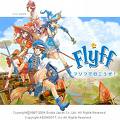
I’m back from my sixth year at GDC! I wrote up my last two trips, and the protests weren’t quite loud enough, so I’m doing it again this year. Don’t worry; the protestors might manage to kidnap me outright this year, so you won’t have to put up with me ever again.
As always, sites like Gamasutra, Slashdot, and GameSpot have more comprehensive reports. What’s more, the full proceedings will soon be available online at GDCTV and GDCRadio.
They have me outnumbered, so I won’t try to compete with them on coverage or details. Instead, I’ll put on my amateur analyst hat and lay out some of the common themes I noticed. Look out, Gartner, here I come!
Contents
- E3 is Dead, Long Live GDC?
- User-Generated Content: YouTube for Games
- Outside the Mainstream: Million-Subscriber MMOs You’ve Never Heard Of
- Children of the Joystick
- Which GDC Speaker Are You?
- I Like to Pretend I’m a Game Developer
E3 is Dead, Long Live GDC?
The pre-GDC buzz this year centered around the implosion of E3, the game industry’s flagship trade show and press event. With E3 downsized to a invite-only press junket, and GDC’s expo floor doubling in size, many wondered if GDC would take over E3’s crown, for better or worse.
 GDC has come and gone, and the answer seems to be a qualified no. Yes, the
expo floor was bigger, but as usual, nearly half of it was dedicated to
closed-door meeting rooms. Sure, there wasn’t much focus this year, but
there’s never been much focus, and that’s not necessarily a bad thing.
GDC has come and gone, and the answer seems to be a qualified no. Yes, the
expo floor was bigger, but as usual, nearly half of it was dedicated to
closed-door meeting rooms. Sure, there wasn’t much focus this year, but
there’s never been much focus, and that’s not necessarily a bad thing.
This year’s GDC was the same as it’s been every year: getting developers, publishers, press, and toolmakers together to talk about anything and everything. Whether it’s in a massive hall or a small roundtable, at a scripted keynote or a fiery off-the-leash rant, there was plenty of good, old-fashioned talk this year. It’s not always pretty or soundbite-friendly, but it’s always worthwhile.
User-Generated Content: YouTube for Games
The overriding theme this year can be summed up in three words: YouTube for games. Everyone was chasing full-speed after the user-generated content bandwagon. The big three platforms all had their official stories, and lots of others were clamoring to tell theirs too.
![]() The big headline was Sony’s announcement of PlayStation Home and
Little Big Planet. PlayStation Home has been compared to Second Life,
and the description is apt. It’s a physics-based virtual world with both
public and private spaces. Users can customize their avatar’s face, body, and
clothes, decorate their apartment, and contribute to public spaces. Options
include downloadable content, free and paid, and the user’s own videos and
photographs.
The big headline was Sony’s announcement of PlayStation Home and
Little Big Planet. PlayStation Home has been compared to Second Life,
and the description is apt. It’s a physics-based virtual world with both
public and private spaces. Users can customize their avatar’s face, body, and
clothes, decorate their apartment, and contribute to public spaces. Options
include downloadable content, free and paid, and the user’s own videos and
photographs.
 Home is mostly interesting for its business and product significance, since
Sony has traditionally avoided running online services for PlayStation
themselves. As a Second Life clone, it’s shallow at best. Sony will probably
control user-generated content with an iron fist, so robust content creation
tools seem unlikely. Content will tend toward digital photographs, Sony
products, and trailers and clips from Sony movies, games, and music.
Home is mostly interesting for its business and product significance, since
Sony has traditionally avoided running online services for PlayStation
themselves. As a Second Life clone, it’s shallow at best. Sony will probably
control user-generated content with an iron fist, so robust content creation
tools seem unlikely. Content will tend toward digital photographs, Sony
products, and trailers and clips from Sony movies, games, and music.
 Little Big Planet takes the same approach. It’s the first AAA product from
Media Molecule, the people behind Rag Doll Kung Fu. It’s a rich,
physics-based, side-scroller sandbox. It will come with some levels built in,
but it will also include simple in-game tools for users to build and share
their own levels and mini-games. It looks really, really cool, even if it’s
ultimately fairly limited.
Little Big Planet takes the same approach. It’s the first AAA product from
Media Molecule, the people behind Rag Doll Kung Fu. It’s a rich,
physics-based, side-scroller sandbox. It will come with some levels built in,
but it will also include simple in-game tools for users to build and share
their own levels and mini-games. It looks really, really cool, even if it’s
ultimately fairly limited.
![]() Microsoft took their first steps toward user-generated content over a year ago
with the second generation of XBox Live. It included gamer tags,
achievements, and most importantly, XBox Live Arcade. They followed up
with the groundbreaking XNA Game Studio Express, which allows homebrew
developers to make their own XBox 360 games. Hackers had done this on other
consoles for years, but this was the first time a console maker had opened a
retail console to legitimate homebrew development. It was a big deal.
Microsoft took their first steps toward user-generated content over a year ago
with the second generation of XBox Live. It included gamer tags,
achievements, and most importantly, XBox Live Arcade. They followed up
with the groundbreaking XNA Game Studio Express, which allows homebrew
developers to make their own XBox 360 games. Hackers had done this on other
consoles for years, but this was the first time a console maker had opened a
retail console to legitimate homebrew development. It was a big deal.
 Even better, another big deal is on its way. In his talk on the past, present,
and future of XBox Live Arcade, Chris Satchell casually mentioned the next
big thing for XBL. He called it Community Arcade, and described it as the
natural evolution of XBLA and XNA Game Studio Express.
Even better, another big deal is on its way. In his talk on the past, present,
and future of XBox Live Arcade, Chris Satchell casually mentioned the next
big thing for XBL. He called it Community Arcade, and described it as the
natural evolution of XBLA and XNA Game Studio Express.
 Basically, it’s YouTube for XBLA. Garage developers will make games, upload
them, and XBLA users will immediately be able to download them, play them, and
rate them. No more onerous certification process. Instant gratification!
Basically, it’s YouTube for XBLA. Garage developers will make games, upload
them, and XBLA users will immediately be able to download them, play them, and
rate them. No more onerous certification process. Instant gratification!
![]() These are markedly different approaches to user-generated content. They may be
parts of greater corporate product plans, but just as importantly, they tell
us a great deal about the souls of these platform giants.
These are markedly different approaches to user-generated content. They may be
parts of greater corporate product plans, but just as importantly, they tell
us a great deal about the souls of these platform giants.
Sony is, at its heart, a content company. It thinks about movies, records, and games first. Hardware and software come second, and are often farmed out to other people. In keeping with that outlook, Home and Little Big Planet focus on sharing content. No programming necessary. No programming allowed.
On the other hand, Microsoft is, at its heart, a software company. Specifically, Microsoft is an operating system company. It makes platforms for other companies to make products on top of. When Microsoft thinks user-generated content, it doesn’t think content, it thinks code. It thinks developers. This cuts to the core of Microsoft’s identity, in the same way that content does for Sony.
 Nintendo didn’t add anything to their story about user-generated content
at this GDC. They’ve dabbled in it with Animal Crossing, with Miis
on the Wii, and they’ve left the door open with Channels. Regardless,
Nintendo is, at its heart, a game company. It’s focusing on what it’s always
focused on: games.
Nintendo didn’t add anything to their story about user-generated content
at this GDC. They’ve dabbled in it with Animal Crossing, with Miis
on the Wii, and they’ve left the door open with Channels. Regardless,
Nintendo is, at its heart, a game company. It’s focusing on what it’s always
focused on: games.

![]() The PC and web have been home to homebrew game development and user-generated
content for decades, so they didn’t earn the same headlines as Sony and
Microsoft this year. Still, GDC highlighted some notable developments.
The PC and web have been home to homebrew game development and user-generated
content for decades, so they didn’t earn the same headlines as Sony and
Microsoft this year. Still, GDC highlighted some notable developments.
GameTap and Steam continued to lead the indie game development trend. Like last year, Gametap offered development contracts to many of the IGF finalists.
Newcomers to GDC included Kongregate and GameGum, highlighted in Raph Koster‘s talk Where Game meets The Web. Both sites are true YouTubes for games, although they’re both Flash-only.
Outside the Mainstream: Million-Subscriber MMOs You’ve Never Heard Of
 A number of people, Raph Koster and Daniel James among them,
drew attention to the fact that some of the biggest games in the world
have flown under the radar of the mainstream game industry. Most are MMOs.
Some, such as Club Penguin and Webkinz, are aimed at kids. Others are
spinoffs of television shows or other brands. Viacom has launched three,
including Virtual Laguna Beach, in the past six months.
A number of people, Raph Koster and Daniel James among them,
drew attention to the fact that some of the biggest games in the world
have flown under the radar of the mainstream game industry. Most are MMOs.
Some, such as Club Penguin and Webkinz, are aimed at kids. Others are
spinoffs of television shows or other brands. Viacom has launched three,
including Virtual Laguna Beach, in the past six months.
 Others, like Silkroad Online, Maple Story, and Flyff, are based
primarily in China and Korea, and are entirely free. Many of these have
strikingly narrow, niche gameplay, but still boast millions of subscribers.
Others, like Silkroad Online, Maple Story, and Flyff, are based
primarily in China and Korea, and are entirely free. Many of these have
strikingly narrow, niche gameplay, but still boast millions of subscribers.
![]() These games are rarely sold in boxed retail SKUs, and they rarely require a
monthly subscription fee. Many are tie-ins to retail products, television
shows, or other media. Others are advertiser-funded. The ones in Asian markets
are often free to download and play. They’re funded by microtransactions,
users buying virtual items for their in-game characters.
These games are rarely sold in boxed retail SKUs, and they rarely require a
monthly subscription fee. Many are tie-ins to retail products, television
shows, or other media. Others are advertiser-funded. The ones in Asian markets
are often free to download and play. They’re funded by microtransactions,
users buying virtual items for their in-game characters.
These are bleeding-edge, forward-looking business models, and it’s too early to say which will be financial successes. We already know that they’re successful as products, though, based on the number of people playing them. Industry veterans like Todd Hollenshead may bury their heads in the sand, scared that the sky is falling due to piracy and counterfeiting. Meanwhile, this new guard will be trailblazing a path for games of the future.
Children of the Joystick
Another prevalent theme of this year’s GDC was alternative forms of input. Conventional examples included the Wiimote and the DS’ touch screen and microphone, but developers explored more radical controllers as well.

![]() The DS and Wii are here to stay. In Japan, that’s an understatement: based on
sales numbers and anecdotal evidence, the DS is the dominant Japanese game
console right now. Similarly, in the next-generation console race, Wii enjoyed
a stronger launch than either XBox 360 or PS3. Analysts, eat your hearts
out.
The DS and Wii are here to stay. In Japan, that’s an understatement: based on
sales numbers and anecdotal evidence, the DS is the dominant Japanese game
console right now. Similarly, in the next-generation console race, Wii enjoyed
a stronger launch than either XBox 360 or PS3. Analysts, eat your hearts
out.
GDC reflected this. There was a plethora of Wii and DS talks, focusing on taking advantage of their unique controllers. Across the board, developers were excited about the possibilities, both for gameplay and for attracting a wider audience.
![]() In an interesting twist, both the Experimental Gameplay Workshop and IGF
finalist Racing Pitch featured audio input. What’s more, they went beyond
the simple blowing and voice commands that DS games have featured so far.
In an interesting twist, both the Experimental Gameplay Workshop and IGF
finalist Racing Pitch featured audio input. What’s more, they went beyond
the simple blowing and voice commands that DS games have featured so far.
Racing Pitch is a racing game, but without the traditional gas and brake buttons. Instead, you hum the sound of an engine into a microphone – no joke! – and your car speeds up, or slows down, based on the tone of your voice.
Similarly, many of the EGW’s Indie Game Jam and Gamma games required you to sing into a mic to control them, a la SingStar and Karaoke Revolution. A few went so far as to move an in-game character, in two dimensions, solely based on your voice! It sounds wonky, but it was surprisingly intuitive.

![]() Even the Game Design Challenge, that perennial favorite, threw its hat in
the alternate input ring. This year’s theme was a controller:
Eric Zimmerman challenged his three contestants to design a game with only
a needle and thread as input. So weird…so intriguing!
Even the Game Design Challenge, that perennial favorite, threw its hat in
the alternate input ring. This year’s theme was a controller:
Eric Zimmerman challenged his three contestants to design a game with only
a needle and thread as input. So weird…so intriguing!
David Jaffe, Alexey Pajitnov, and Harvey Smith took the challenge. Jaffe proposed a paper airplane game, complete with online sharing of airplane designs and levels. True to his tetris roots, Pajitnov presented an abstract, elegantly simple multiplayer puzzler. Smith went the aesthetic route, envisioning a traditional adventure game in a rich, patchwork fantasy world.
If you were voting with your heart, you’d go with Pajitnov. If you were voting with your dollars, you’d go with Jaffe. The result? Pajitnov, hands down. Game developers clearly haven’t forgotten their roots. :P
Which GDC Speaker Are You?
Over the course of six GDCs, I’ve seen the career arcs of a number of prominent industry speakers. Many are normal, garden-variety developers and publishers, just trying to give something back to the community. The more interesting characters, though, often fall into a few distinct personalities. Behold…the GDC speaker menagerie!

![]() The party mouthpiece is a fairly common species of big-name GDC speaker. These
speakers’ first and only job at GDC is to represent their company, usually
either a platform maker or a large publisher. Notable examples include Phil
Harrison, Reggie Fils-Aime, Peter Moore, and J. Allard. This species can be
distinguished by its slick, scripted keynote speeches and smart
marketing-speak during interviews.
The party mouthpiece is a fairly common species of big-name GDC speaker. These
speakers’ first and only job at GDC is to represent their company, usually
either a platform maker or a large publisher. Notable examples include Phil
Harrison, Reggie Fils-Aime, Peter Moore, and J. Allard. This species can be
distinguished by its slick, scripted keynote speeches and smart
marketing-speak during interviews.
![]() When left unsupervised, the party mouthpiece can grow dangerously big. Its ego
becomes bloated from speaking engagements and media pandering, and it
eventually begins to believe its own overblown hype and talent.
When left unsupervised, the party mouthpiece can grow dangerously big. Its ego
becomes bloated from speaking engagements and media pandering, and it
eventually begins to believe its own overblown hype and talent.
At this point, it has outgrown its host company, and thinks it can survive on its own. What’s worse, venture capital firms are seduced by the same speaking engagements and media pandering, and fund the overinflated ego! They lavish it with money and employees, and it strikes out on its own…only to learn, years later, that its overinflated ego was only that.
I won’t name names, but I saw a few canonical examples at GDC this year, in different stages of the life cycle. It’ll be interesting to see how they end up!
![]() On the other end of the spectrum is the reluctant role model. This is usually
a talented developer who makes great games, one of which eventually becomes a
hit. They’re suddenly thrust into the spotlight, whether they like it or not.
On the other end of the spectrum is the reluctant role model. This is usually
a talented developer who makes great games, one of which eventually becomes a
hit. They’re suddenly thrust into the spotlight, whether they like it or not.
 Chris Taylor, of Total Annihilation and Supreme Commander fame,
exemplified this species at this year’s GDC. Chris held court for over an hour
at his 9am Supreme Commander talk. He’s hilarious, larger than life, and a
born performer. He eschewed notes and slides and held his audience rapt for
nearly an hour.
Chris Taylor, of Total Annihilation and Supreme Commander fame,
exemplified this species at this year’s GDC. Chris held court for over an hour
at his 9am Supreme Commander talk. He’s hilarious, larger than life, and a
born performer. He eschewed notes and slides and held his audience rapt for
nearly an hour.
Chris talked about his history in the industry, his past games and companies, and the path to shipping SupCom. I was impressed by his enthusiasm for building the Gas Powered Games organization, focusing on unusal (for the game industry) concepts like sustainable working hours and healthy perks.
He may be nearing the age of 40, but Chris was overflowing with energy. You could tell he’d been manic when he was younger, and it would surely have been all to easy for him to burn out. He’d obviously matured and seen the light, though, and he’d instilled the values of health and work/life balance in his team. It was sobering, and very inspiring.
I Like to Pretend I’m a Game Developer
 No, really. Chris’ talk reminded me that I really do enjoy pretending I’m part
of the game development community. Sure, even if I was a developer at one
point, I know I’m not any more. I still spend a lot of time following the
industry, though. One of the things I like most about GDC is feeling like I’m
part of the community, even for just a bit.
No, really. Chris’ talk reminded me that I really do enjoy pretending I’m part
of the game development community. Sure, even if I was a developer at one
point, I know I’m not any more. I still spend a lot of time following the
industry, though. One of the things I like most about GDC is feeling like I’m
part of the community, even for just a bit.
 Events like the platform keynotes, Game Design Challenge, Experimental
Gameplay Workshop, Programmer’s Challenge, and IGF and
Game Developers Choice Awards really drive that home. It doesn’t last,
and it’s kind of cheating, since I’m not really a game developer, but it’s
still a great feeling.
Events like the platform keynotes, Game Design Challenge, Experimental
Gameplay Workshop, Programmer’s Challenge, and IGF and
Game Developers Choice Awards really drive that home. It doesn’t last,
and it’s kind of cheating, since I’m not really a game developer, but it’s
still a great feeling.
…and just like that, another GDC has come and gone. Sigh. See you next year!


i mean … i still can’t download heehee … you could be an actual game developer if you packaged that. here’s to the double hee
nintendo recently announced their plan for indie, user-generated games with WiiWare. indie developers will be able to make full-fledged downloadable Wii games and sell them for points, similar to XBLA and PlayStation Network.
the development side is unclear. will developers still need a dev kit? will a PC and a retail Wii be enough? regardless, it sounds like the certification process will be way less painful than XBLA’s or PSN’s.
overall, this is great news. sony, wake up! you can say whatever you want, but everyone knows that WiiWare and XBLA community arcade are light years ahead of your little PS3 linux distro.